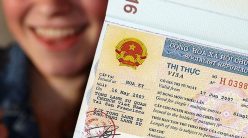Supervision of court judgments and decisions plays an important role in ensuring the accuracy, groundedness and lawfulness, protecting the legitimate rights and interests of citizens and organizations, and contributing to ensuring the law. uniform implementation law.
Legal basis of supervision of judgments and decisions of district courts
On the basis of the duties and powers of the Procuracy (VKS) as stated in the Constitution “The People’s Procuracy exercises the right to prosecute and supervise judicial activities” (Clause 1, Article 107 of the 2013 Constitution), Law The Organization of the People’s Procuracy (People’s Procuracy) in 2014 defined the duties and powers of the Procuracy as “supervising judgments and decisions of the Court” (Clause 2, Article 19 and Clause 2, Article 27) when investigating. adjudicate criminal cases and supervise the settlement of administrative cases, civil cases, marriage and family, business, commerce, labor and other matters as prescribed by law (hereinafter abbreviated to: is a civil case or matter).
Image for illustration purposes only (Internet source)
To ensure the performance of these duties and powers, the specialized procedural laws all stipulate the responsibility of the Court to send first-instance judgments and decisions to the Procuracy. Specifically, in Article 182 of the Criminal Procedure Code (CPC) 2003 stipulates the assignment of court decisions as follows: “Decision to bring the case to trial, decision to suspend, decision to suspend temporarily the case must be immediately sent to the procuracies of the same level” . Article 229 of the 2003 Criminal Procedure Code provides for the delivery of judgments: “Within ten days from the date of judgment pronouncement, the first-instance court must hand over the judgment to the defendant and the same-level procuracies…” . In Clause 2, Article 214 and Clause 3, Article 217 of the Civil Procedure Code 2015 stipulate that within 03 working days from the date of issuance of the decision to suspend or terminate the settlement of civil cases, The court must send that decision to the procuracies of the same level; and for the decision to recognize the agreement of the involved parties, it shall be sent to the procuracies of the same level within 05 days from the date of issuance of the decision (Article 212 of the Civil Code 2015). The Court’s sending of first-instance administrative judgments and decisions is prescribed in Article 196 of the 2015 Law on Administrative Procedures: “Within 07 days from the date of judgment pronouncement, the Court must issue and send judgments to the involved parties. and the Procuracy of the same level” and corresponding regulations…
Issues raised in the supervision of judgments and decisions of district courts
Many problems arise in theory and practice in the supervision of this judgment and decision, many violations have not been detected in time to exercise the right to appeal to appellate, while The appellate appeal is amended or canceled (due to the litigants’ appeal) is still high, in particular, there are cases where the violation is detected but the time limit for appellate protest has expired, but considering the nature and extent of the appeal, it has not reached the level of protest. cassation and reopening procedures (in many cases, when considering protests against cassation or reopening procedures for civil and administrative judgments, a petition from the involved parties must be filed before making a protest), there are still gaps and violations. This violation has not been fully remedied.
The cause of the above situation is partly due to the fact that many legal provisions are still general, so it is difficult to defend protests, due to the capacity of civil servants and procurators; or because they are subjective, have not studied or read judgments and decisions, especially long ones; many procuracies, procurators still respect and follow the direction; status of subordinates not sending judgments or decisions to the superior procuracies (provincial level) or sending them late but there is no time limit for appellate protest. On the other hand, many procurators and inspectors (especially newly appointed comrades or newly transferred from one stage of supervision to another) have not studied thoroughly, and have not paid much attention to the implementation of the law. seriously monitoring the judgments and decisions of the Court in the spirit of the Directives on strengthening the work of appellate protest.
Many control sheets of judgments and decisions are typed by the procurator himself, and then corrected at his own discretion, leading to the issuance of incorrect forms, incomplete contents of the inspection request or no content. The supervisory content of the immediate superior procuracies also affects the quality of supervision of court judgments and decisions. In some cases and matters, due to their complicated nature, it is difficult to detect violations of the Court only through the inspection of judgments and decisions (while many cases are in the civil field, cases administrative judgments of the procuracies of the same level do not participate in the settlement, do not study the files from the beginning, such as the Court’s decision to recognize the agreement of the involved parties, the decision to suspend or suspend…), but must have case files, either directly participating in the inspection or having a complaint or proposal from the involved party can research and detect violations and omissions of the Court, which also limits the supervision work. These judgments and decisions, especially for appellate procuracies, only supervise on the basis of first-instance judgments and decisions and procuracies submitted by district-level procuras, without directly studying the files and participating in the hearings. court as in the first-instance procuracies.
According to the provisions of the Law on Organization of the People’s Procuracy 2014 and specialized procedural laws, the superior People’s Procuracy has the power to protest through cassation and reopening procedures against judgments and decisions of district-level courts within its competence. However, it does not stipulate that the district-level procuracies send judgments and decisions of the same-level courts to the higher-level people’s procuracies for inspection, thus limiting the ability of the high-level people’s procuracies to approach and detect violations. failure to exercise the right to protest and petition, which is mainly based on the reports of the procuracies of the province and district through the supervision of the judgments and decisions of the first instance level of the district court. However, if it is stipulated that the district-level procuracies have both sent the judgments and decisions of the district-level courts to the provincial-level procuracies and sent them to the high-level people’s procuras, many issues need to be considered and evaluated, such as the people’s procuracies. High-level people will receive and supervise too many judgments and decisions (besides the judgment of the first-instance and appellate court decisions of the provincial courts, in 2016, the senior People’s Procuracy in Da Nang inspected 826 judgments and decisions. first instance and 454 appellate judgments and decisions of the Provincial Courts in the Central region – Central Highlands (Summarization report of 2016 supervision of the High-level People’s Procuracy in Da Nang)), while the current force is still limited. very thin and do a lot of other work.
Some solutions and recommendations
Firstly, leaders of procuracies at all levels must pay attention to thoroughly and regularly inspect and urge the supervision of court judgments and decisions; Procurators, inspectors and specialists at all levels must study, fully grasp and strictly comply with the provisions of the law and the industry (especially the two Directives mentioned above) on the supervision of judgments, decision of the district court, considering this as one of the basic stages of supervision of their units.
Second, the district-level procuracies must strictly comply with regulations after receiving the judgments or decisions. Procurators and civil servants assigned to supervise them must carefully read them to detect violations. urgently verify, clarify and invite involved parties to work to clarify the violations and shortcomings of the Court to serve the review and protest, make a procuracy vote and report to the Institute’s leadership. Simultaneously, copies must be sent to the first-instance judgments and decisions, control sheets of judgments and decisions to the appellate procuracy according to the prescribed form, fully and promptly. For judgments and decisions sent late by the Court (in this case or there are problems of improper application of the law), the procuracies of the same level must closely monitor the time of sending judgments and decisions, regularly exchange remind the Court of the same level to send it early or on time as prescribed. In case of late submission by the Court, if the appellate protest of the Procuracy is delayed, it must propose to remedy the violation immediately on a case-by-case basis. on a monthly, quarterly and yearly basis. It must be determined that this is the level of the procuracy that has the main responsibility in supervising the judgments and decisions of the Courts of the same level.
Thirdly, the provincial-level procuracies must strengthen supervision of the judgments and decisions sent by the first-instance procuracies, if violations are detected, they must promptly appeal to appellate courts. as clearly as the first-instance procuracies as mentioned above or withdraw the records of the district court for study. If, through the inspection of judgments and decisions of the district-level courts, violations are detected but the time limit for appellate protest has expired, they must report them to the higher-level People’s Procuracy for consideration and protest against cassation and reopening. ; do well in providing professional guidance to lower-level procuracies. On the other hand, in order to overcome the situation that the district-level procuracies send incomplete or untimely judgments and decisions of the same court to the provincial procuracies, the provincial procuracies need to open a book to monitor the receipt of the judgments, decisions of district-level courts, monthly summarizing, comparing and contrasting with statistics and periodical work reports of district-level procuracies or through appellate case files to determine judgments and decisions The decision of the district court can be sent by the district procuracies to the provincial procuracies. On that basis, every year, the provincial-level procuracies must examine, evaluate and draw lessons on the supervision of judgments and decisions, in order to see advantages and limitations in order to propose appropriate solutions; It is necessary to issue many notices of learning to be sent to district-level units for study in order to remedy violations and shortcomings, and improve the quality and efficiency of appellate appeals.
Fourthly, for the high-level People’s Procuracy, in the relationship between the high-level People’s Procuracy and the provincial-level Procuracy and the district-level Procuracy within the management area, in order to overcome the situation that the high-level People’s Procuracy does not accept the judgments and decisions of the high-level People’s Procuracy. The district court limits the power to protest according to cassation and reopening procedures as mentioned above, in our opinion, in the immediate future, the Supreme People’s Procuracy should issue a written request to the provincial-level Procuracy to strengthen the supervision of judgments and decisions. Decisions of the district-level courts, monthly special reports on this professional work to the senior People’s Procuracy within the scope of management.
Fifth, continue to include the targets of supervision of court judgments and decisions and appellate appeals into the annual emulation assessment, but must use the quality of protest criteria as a basis for evaluation in order to avoid widespread protests or no protests during the service year.
Sixth, when the 2015 Criminal Procedure Code comes into force, a new Directive will soon be issued to replace Directive No. 03/CT-VT dated June 19, 2008 of the Supreme People’s Procuratorate of the Supreme People’s Procuracy on strengthening the work of appellate protest. criminal proceedings to be consistent with the Law on Organization of the People’s Procuracy 2014 and the new Criminal Procedure Code.
Source: According to kiemsat.vn
For support and advice on Business, Investment, Intellectual Property, License, Tax, … in the best way, please contact us with the following information:
DHP LAW
Address: L4-09.OT06 Landmark 4 Building Vinhomes Central Park, 720A Dien Bien Phu, Ward 22, Binh Thanh District, Ho Chi Minh City DHPLAW








